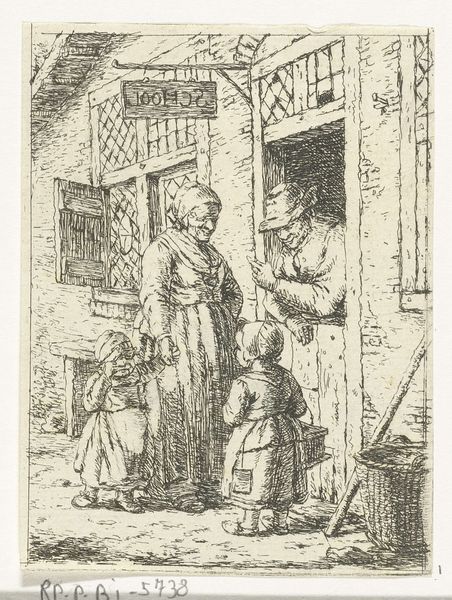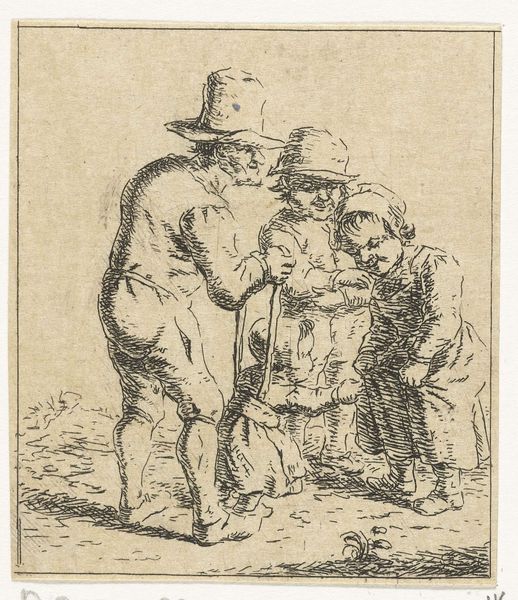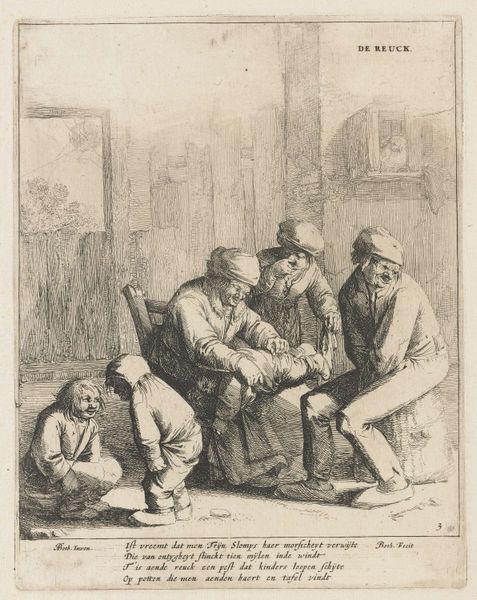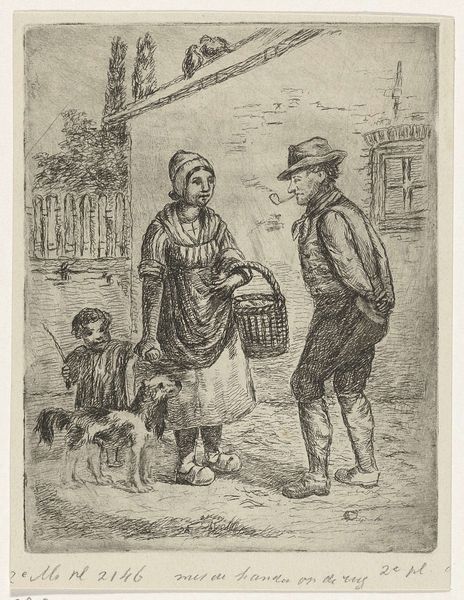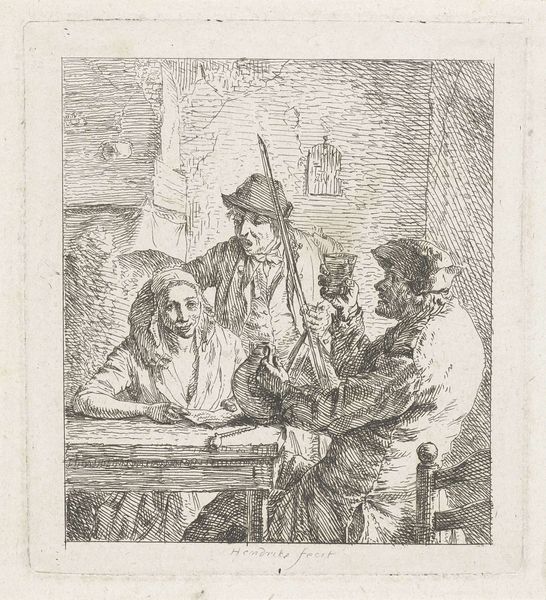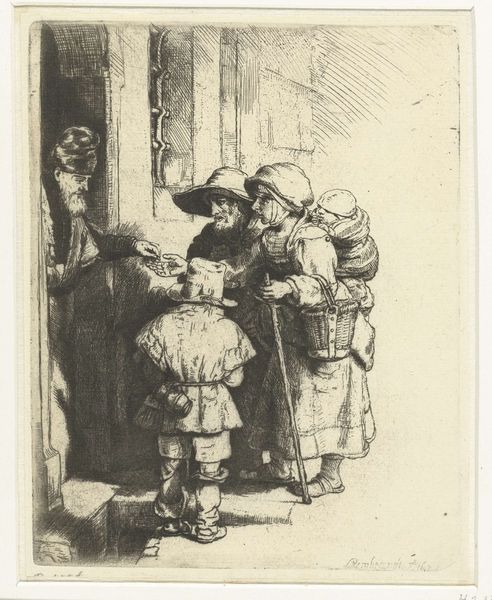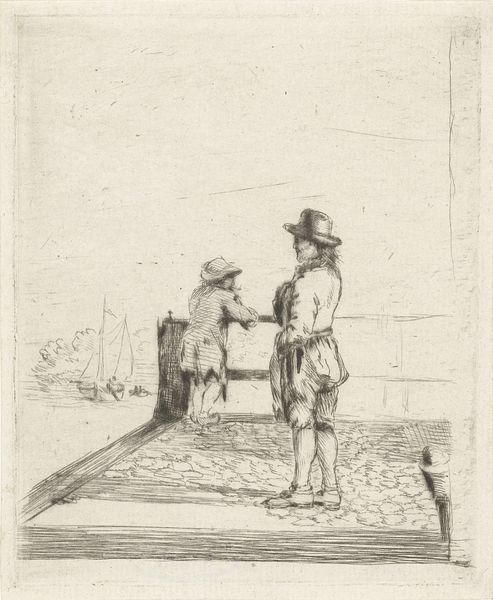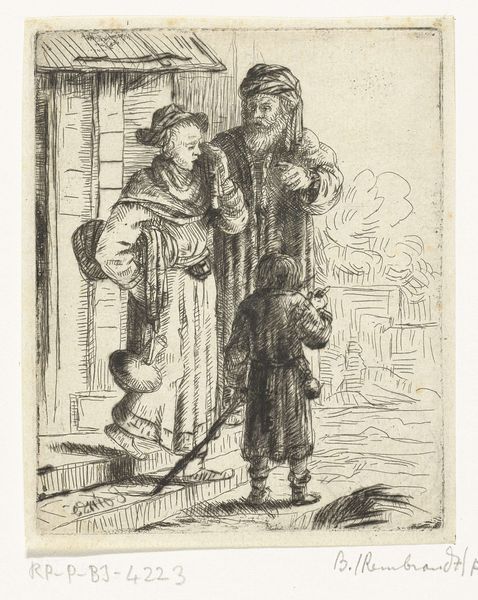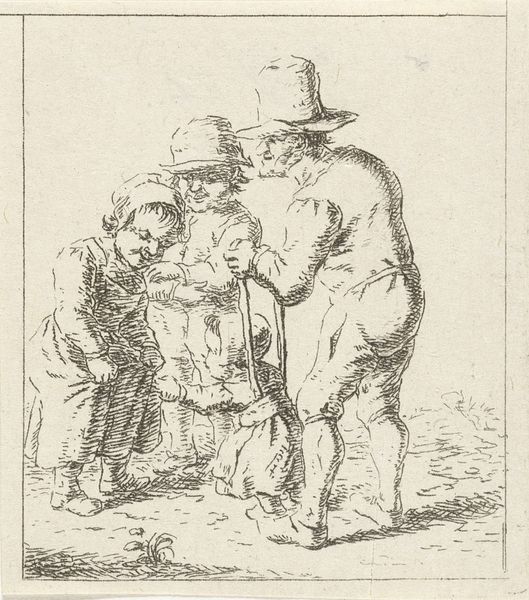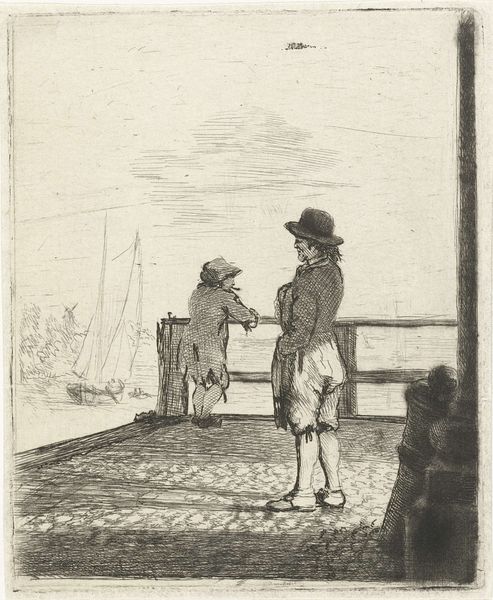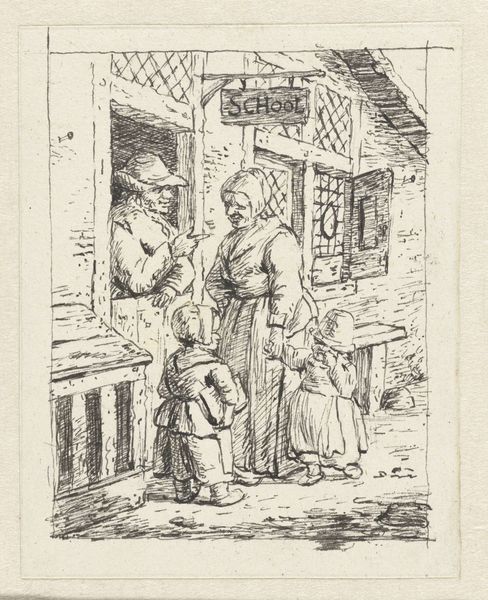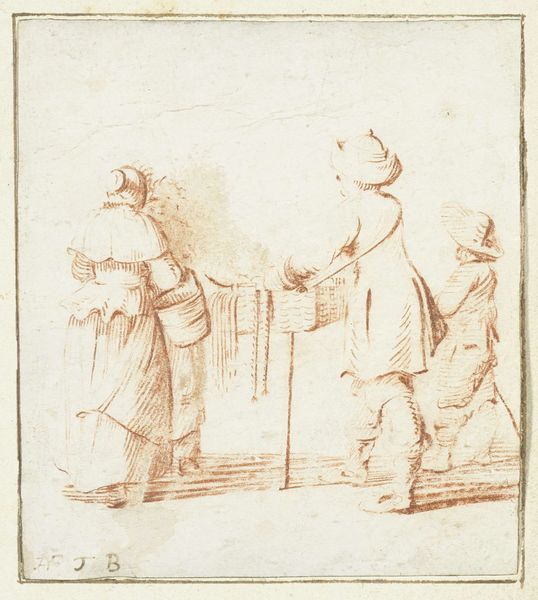
drawing, etching, paper, ink
#
portrait
#
drawing
#
narrative-art
#
etching
#
etching
#
paper
#
personal sketchbook
#
ink
#
sketchwork
#
genre-painting
#
realism
Dimensions: height 96 mm, width 73 mm
Copyright: Rijks Museum: Open Domain
Curator: Welcome. Here we have “Family in Front of the Door," an etching by Christina Chalon, created sometime between 1758 and 1808. It's currently held here at the Rijksmuseum. Editor: It feels like a fleeting glimpse into an everyday scene. I’m immediately struck by the texture achieved through such delicate lines, especially the rough surface of the brickwork contrasted with the soft clothing. Curator: Chalon was quite skilled at capturing such candid moments. During this era, images of daily life, genre scenes like this, were gaining popularity. It offered a window into the lives of ordinary people. Editor: What's really interesting to me is the process. The labor involved in creating this etching – the careful application of acid, the physical act of pressing – really grounds it. It’s a world away from the mass-produced images we’re bombarded with today. Curator: Precisely! Etchings like these were often made for a burgeoning middle class interested in art for their homes. There was an expanding market that fueled the demand for works portraying daily life and, more importantly, made them affordable and more accessible to many social classes. Editor: And think about the materials themselves! Paper, ink, the copper plate. They all had their own origins, their own histories before Chalon even started. It all contributes to how this image was produced and then consumed, doesn’t it? Curator: Indeed, and it gives us insight into the value society placed on family, domesticity, and community, concepts frequently depicted. These weren't just personal representations; they were societal statements. Editor: Looking at the composition, there is a starkness to it that really brings attention to the subject itself and to the texture created. You are reminded of how difficult it was to create images in those days. I also love how sketch-like the composition appears; how each stroke carries so much information in the composition of the figures, clothes, and the general domestic setting portrayed. Curator: It shows us, in her lines and depiction, an idealized representation that also speaks of the social role of women during that time: in domestic settings, family, and within specific socio-economic constraints, since she mostly captures subjects like this. Editor: Thinking about it all – the process, the materials, and what we, in the present, glean from it all, this image serves as a testament to both Chalon's skill, labor, and to her time. Curator: And also how it continues to provide, over centuries, relevant, diverse views on 18th-century society.
Comments
No comments
Be the first to comment and join the conversation on the ultimate creative platform.

